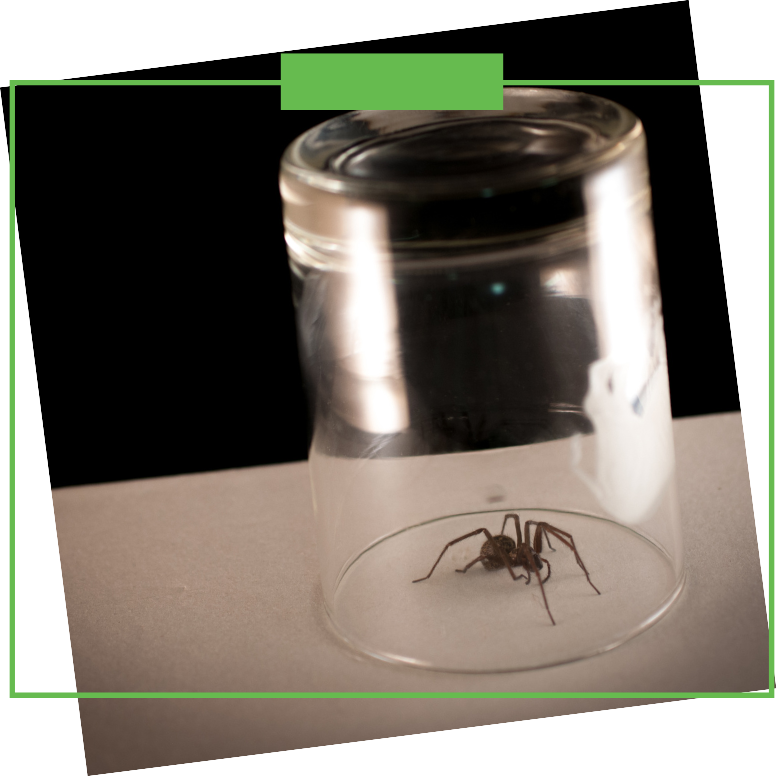Spiders tend to show up in places we least expect—basements, bathrooms, attics, tucked behind curtains, and inside garages. Their presence can feel sudden, even though they may have been quietly building webs and hunting insects for weeks. The thing is, these pests don’t just wander indoors by chance. They’re drawn by environmental conditions, available prey, and, in many cases, an ideal hiding spot. Darkness, moisture, and quiet corners all work in their favor. When outdoor temperatures drop or insect populations shift, some species instinctively move indoors to survive.
It’s a common misconception that most species bite or pose an immediate threat. In truth, the vast majority of household these creatures are reclusive and uninterested in human interaction. Still, the anxiety and discomfort they trigger are real for many people. What complicates matters further is that certain species, like the brown recluse or black widow, do pose medical concerns—especially if left undisturbed in crawlspaces or storage areas. Even though serious interactions are rare, it’s the uncertainty of what type of spider has moved in that leads many people to seek professional help.
Why Spiders Are More Persistent Than You Think
The persistence of a spider problem often catches people off guard. You clear out the webs, maybe even seal up a few entry points, and yet they return. That’s because most of their activity is a symptom of a larger ecosystem at play. If there’s a steady supply of insects inside your home—flies, ants, silverfish, or even roaches—spiders are simply following the food. The longer the underlying pest problem goes unaddressed, the more appealing your space becomes to these arachnids.
Some spiders lay dozens of eggs at a time, and the sacs are well hidden—tucked under furniture, behind wall art, or inside cardboard boxes. This means that a single unnoticed egg sac can give rise to a fresh wave of spiderlings in a matter of weeks. And unlike ants or termites, thier colonies aren’t centralized. They don’t have queens or a clear hierarchy, which makes them difficult to track and even harder to eliminate using DIY methods.
Another factor is the structure of your home. Gaps in siding, loose screens, openings near utility pipes, or vents without proper mesh allow easy entry. Many homeowners focus on sealing doors and windows, but the tiny, overlooked access points are often the real culprits. Professional pest control doesn’t just remove the spiders you see—it identifies the ones you don’t and targets the conditions that allow them to thrive.
Webs, Bites, And The Unease Of Not Knowing
A cobweb in the corner of a room isn’t just unsightly—it’s a sign of recent activity. And when webs start showing up in multiple places, it becomes clear that more than one spider is settling in. Some species spin messy, irregular webs, while others build geometric, precise designs. The type of web can reveal a lot about the species involved, but for the average person, that detail often goes unnoticed. Instead, what remains is a growing sense of discomfort and a creeping suspicion that the problem runs deeper.
Then there’s the issue of bites. Most of the time, what people think are spider bites turn out to be skin irritations caused by something else—bed bugs, fleas, or even minor allergic reactions. Still, certain spider bites do occur, and when they do, the symptoms can range from mild redness to more serious tissue damage, depending on the species and the person’s reaction. That kind of uncertainty—paired with a lack of visibility into where spiders are hiding—can turn a minor concern into a major source of anxiety.
And while bites and webs are the obvious signs, the real issue lies in the unpredictability. You might go weeks without seeing anything, only for one to scurry across the floor late at night. It’s not just about eliminating spiders—it’s about restoring peace of mind.
The Long-Term Impact Of Inaction
Spiders might not be destructive like termites or rodents, but their presence signals other problems that shouldn’t be ignored. Persistent spider sightings often mean your home has a consistent food source—an insect population quietly thriving out of view. Ignoring that can result in a snowball effect. Insect infestations get worse, and spiders stick around longer to take advantage.
On a practical level, living with recurring spider issues often leads to disrupted routines. People may start avoiding certain areas of the house, delay unpacking storage boxes, or over-rely on bug sprays and repellents that don’t solve the core problem. It can also affect guests’ comfort and impressions of your home or business.
The psychological toll matters too. For those with arachnophobia or general aversions, even a small spider sighting can create days of unease. That kind of stress—however subtle—adds up. Professional pest control addresses both the spiders and the contributing factors, breaking the cycle and restoring a sense of control.
If spiders are becoming more than just a passing nuisance in your home or business, it’s time to go beyond guesswork. Ideal Pest Control offers thorough inspections, targeted treatments, and the experience to identify what’s attracting these eight-legged intruders in the first place. Whether you’re dealing with recurring web clusters or just can’t shake the feeling that something’s moving in the walls, getting expert help makes all the difference.
Contact us today to schedule a consultation or ask questions about your specific concerns. You deserve more than a temporary fix—you deserve a solution that lasts.
Frequently Asked Questions About Spiders
Q1. Why do spiders seem to appear more often during certain seasons?
A1. Spiders tend to make more appearances in homes during late summer and early fall—not because they’re invading in droves, but because that’s mating season for many common spider species. Male spiders begin to wander in search of a mate, which brings them out of their hidden corners and into the open. Additionally, as outdoor temperatures drop, spiders look for warm, sheltered areas—your home being an ideal spot.
Q2. Can spiders actually help with pest control inside the home?
A2. It’s true that spiders eat other insects, including mosquitoes, flies, and even roaches. In that sense, they can offer a form of natural pest control. However, letting them roam freely indoors isn’t ideal. Their webs quickly become a nuisance, some species can bite, and a spider presence often signals a deeper insect issue that’s attracting them in the first place.
Q3. Do spiders return to the same spots in your home?
A3. Yes, many spiders are creatures of habit. If they find a sheltered spot with a steady food supply, they’ll often return—or even stay put and rebuild webs in the exact same corner. Some species, like cellar spiders, will live and spin webs in one spot for months. Seeing repeat webbing in the same places can be a sign of an ongoing infestation that may require expert attention.



